Themed collection Chemical Communications HOT articles

Electrocatalytic oxidative upgrading of biomass platform chemicals: from the aspect of reaction mechanism
We describe the recent progress in oxidative biomass electrorefining via inner-sphere and outer-sphere anodic reactions.
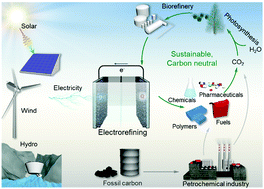
Chem. Commun., 2022,58, 897-907
https://doi.org/10.1039/D1CC06254A
Cobalt-catalyzed alkyne hydrosilylation as a new frontier to selectively access silyl-hydrocarbons
This article describes recent advances on cobalt-catalyzed regioselective alkyne hydrosilylations enabled by delicate ligand design.
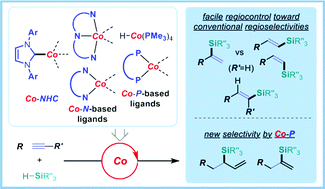
Chem. Commun., 2022,58, 491-504
https://doi.org/10.1039/D1CC06214J
Cyclometallated complexes as catalysts for C–H activation and functionalization
This highlight describes an emerging trend in the C–H activation field: the use of the cyclometallated catalysts for the challenging and unprecedented direct transformations.
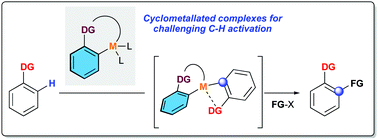
Chem. Commun., 2022,58, 483-490
https://doi.org/10.1039/D1CC05195D
Cationic π-extended heteroaromatics via a catalytic C–H activation annulative alkyne-insertion sequence
Herein, the recent progress of an annulative alkyne-insertion π-extension (AAIPEX) strategy to construct opto-electronically significant cationic polycyclic heteroaromatic compounds (cPHACs) is showcased.
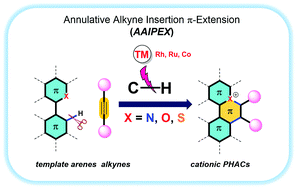
Chem. Commun., 2022,58, 133-154
https://doi.org/10.1039/D1CC05590A
Artificial light-harvesting systems based on macrocycle-assisted supramolecular assembly in aqueous media
This Feature Article will discuss the fabrication of light-harvesting systems based on water-soluble macrocycles, such as cyclodextrins (CD), pillararenes (PA), calixarenes (CA), cucurbiturils (CB), and other macrocycles.
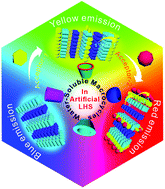
Chem. Commun., 2021,57, 13641-13654
https://doi.org/10.1039/D1CC06011B
Pillararene-based molecular-scale porous materials
This feature article discusses the synthetic methods, functionalisation approaches and application potential of pillararene-based molecular-scale porous materials.
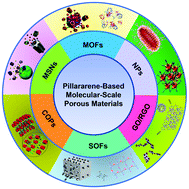
Chem. Commun., 2021,57, 13429-13447
https://doi.org/10.1039/D1CC06105D
Enzymatic noncovalent synthesis of peptide assemblies generates multimolecular crowding in cells for biomedical applications
This article highlights the unique features of enzymatic noncovalent synthesis (ENS) for generating multimolecular crowding in cells and the relevant applications for biomedicines.
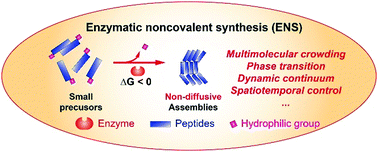
Chem. Commun., 2021,57, 12870-12879
https://doi.org/10.1039/D1CC05565H
Achievements in Pt nanoalloy oxygen reduction reaction catalysts: strain engineering, stability and atom utilization efficiency
Achievements in Pt nanoalloy catalysts for the oxygen reduction reaction (ORR) are summarized from three aspects, namely, strain engineering, stability, and atom utilization efficiency.
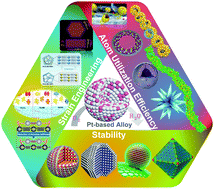
Chem. Commun., 2021,57, 12898-12913
https://doi.org/10.1039/D1CC05534H
The mutual interactions of RNA, counterions and water – quantifying the electrostatics at the phosphate–water interface
Recent progress in the understanding of the electrostatics at the biological phosphate–water interface establishes the interaction strength with water molecules and counterions, the relevant fluctuation timescales and the spatial reach of interactions.

Chem. Commun., 2021,57, 12880-12897
https://doi.org/10.1039/D1CC05367A
Thermal management materials for energy-efficient and sustainable future buildings
State-of-the-art materials design, structural engineering and computational modeling, and new opportunities to develop sustainable and energy-efficient thermal management materials for future smart buildings.

Chem. Commun., 2021,57, 12236-12253
https://doi.org/10.1039/D1CC05486D
Excited state dynamics and photochemistry of nitroaromatic compounds
Nitroaromatic compounds have unique excited state dynamics due to the presence of oxygen-centered non-bonding orbitals.

Chem. Commun., 2021,57, 12218-12235
https://doi.org/10.1039/D1CC04999B
Atomically dispersed metal catalysts on nanodiamond and its derivatives: synthesis and catalytic application
The recent progress in the synthesis and catalytic application of atomically dispersed metal catalysts on nanodiamond and its derivatives is systematically summarized.
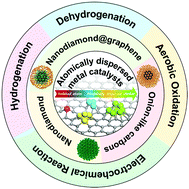
Chem. Commun., 2021,57, 11591-11603
https://doi.org/10.1039/D1CC05202K
Luminescent lanthanide–macrocycle supramolecular assembly
Macrocyclic compounds, including crown ether, cyclodextrin, cucurbituril and pillararene, bound to various specific guest molecules through various non-covalent interactions, can make the system multifunctional and endow system with intelligence.
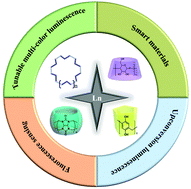
Chem. Commun., 2021,57, 11443-11456
https://doi.org/10.1039/D1CC04672A
Amidinium⋯carboxylate frameworks: predictable, robust, water-stable hydrogen bonded materials
This feature article describes the development of hydrogen bonded frameworks assembled using amidinium∙∙∙carboxylate hydrogen bonds, and discusses their structures, stabilities and applications.
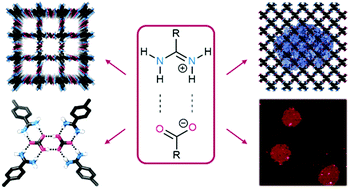
Chem. Commun., 2021,57, 10998-11008
https://doi.org/10.1039/D1CC04782E
C–H bond functionalization by high-valent cobalt catalysis: current progress, challenges and future perspectives
Over the last decade, high-valent cobalt catalysis has earned a place in the spotlight as a valuable tool for C–H activation and functionalization.
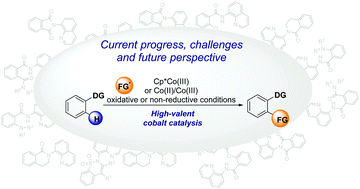
Chem. Commun., 2021,57, 10827-10841
https://doi.org/10.1039/D1CC04382J
Recent advances in (chemo)enzymatic cascades for upgrading bio-based resources
Developing (chemo)enzymatic cascades is very attractive for green synthesis, because they streamline multistep synthetic processes.
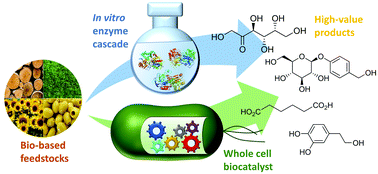
Chem. Commun., 2021,57, 10661-10674
https://doi.org/10.1039/D1CC04243B
Recent advances in catalytic asymmetric aza-Cope rearrangement
This review highlights the recent progress in catalytic asymmetric aza-Cope rearrangement, and covers important features of these studies including catalytic system design, mechanism insight, stereochemistry analysis and synthetic applications.

Chem. Commun., 2021,57, 10469-10483
https://doi.org/10.1039/D1CC04387K
Molecular structures and magnetic properties of endohedral metallofullerenes
Endohedral metallofullerenes are fascinating materials. Recent progress on molecular structures and magnetic properties of metallofullerenes is summarized in this feature article.

Chem. Commun., 2021,57, 10317-10326
https://doi.org/10.1039/D1CC04218A
Biofunctional chemistry and reactivity of biogenic acrolein for cancer diagnosis and therapy
Acrolein holds excellent potential as a biomarker in various oxidative stress-related diseases, including cancer, Alzheimer's, Parkinson's, and inflammatory disorders.
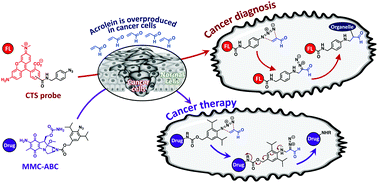
Chem. Commun., 2021,57, 9798-9806
https://doi.org/10.1039/D1CC03590H
Reduction of NO by diiron complexes in relation to flavodiiron nitric oxide reductases
A detailed analysis of the mechanism and model studies of NO reduction by flavodiiron nitric oxide reductases (FNORs) is presented.

Chem. Commun., 2021,57, 8682-8698
https://doi.org/10.1039/D1CC03149J
Enhanced polysaccharide nanofibers via oxidation over SiliaCat TEMPO
Drawing on independent work carried out by academic and industrial researchers using the immobilized TEMPO catalyst SiliaCat TEMPO, in this study, we show how shifting the carboxylation process mediated by TEMPO in solution to a process mediated by the above-mentioned hybrid sol–gel catalyst allows the synthesis of insoluble polysaccharide nanofibers of superior quality, eliminating waste.
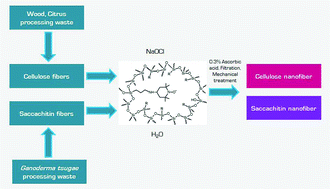
Chem. Commun., 2021,57, 7863-7868
https://doi.org/10.1039/D1CC02684D
Cross β amyloid assemblies as complex catalytic machinery
Short peptide-based cross β amyloid assemblies can mimic advanced enzyme functions and possibly were the earliest protein folds.
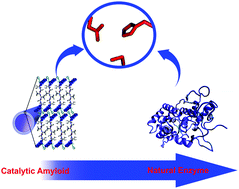
Chem. Commun., 2021,57, 7597-7609
https://doi.org/10.1039/D1CC02880D
Electrochemical nitrogen reduction: recent progress and prospects
Electrochemical nitrogen reduction reaction (ENRR) is regarded as a green process for ammonia production. This work provides a comprehensive review on recent advance in the ENRR process. Opportunities and future directions of it are also discussed.
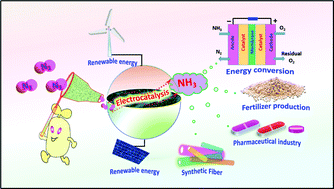
Chem. Commun., 2021,57, 7335-7349
https://doi.org/10.1039/D1CC01451J
Diacyl peroxides: practical reagents as aryl and alkyl radical sources
This feature article describes the recent achievements in utilizing diacyl peroxides as arylating and alkylating reagents in organic synthesis via the formation of aryl and alkyl radicals.

Chem. Commun., 2021,57, 6707-6724
https://doi.org/10.1039/D1CC02322E
The influence of polymer architecture in polymer mechanochemistry
This Feature Article describes how cyclic, intramolecularly cross-linked, dendritic, star, bottlebrush, and dendronized polymer architectures can influence the mechanochemical reactivity of polymers.
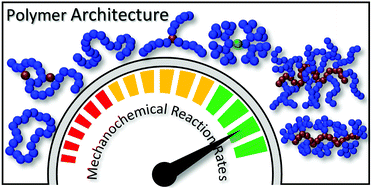
Chem. Commun., 2021,57, 6465-6474
https://doi.org/10.1039/D1CC02501E
Intrinsically ultralow thermal conductive inorganic solids for high thermoelectric performance
Intrinsic strategies to inhibit phonon propagation through a crystalline inorganic solid and to achieve low lattice thermal conductivity.
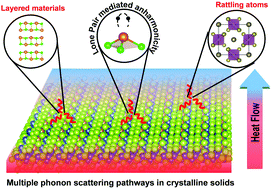
Chem. Commun., 2021,57, 4751-4767
https://doi.org/10.1039/D1CC00830G
Catalytic conversion of nitrogen molecule into ammonia using molybdenum complexes under ambient reaction conditions
This feature article overviews the development of the conversion of nitrogen molecule into ammonia using molybdenum complexes with a special focus on the reaction mechanism.
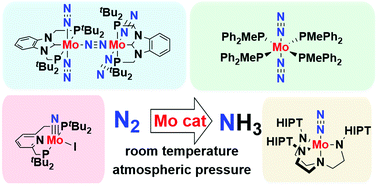
Chem. Commun., 2021,57, 1176-1189
https://doi.org/10.1039/D0CC07146C
Silver-assisted gold-catalyzed solid phase synthesis of linear and branched oligosaccharides
Gold-catalyzed synthesis of oligosaccharides is reported by solid-phase methods. The utility of this is demonstrated by the synthesis of branched and linear pentaarabinofuranosides.
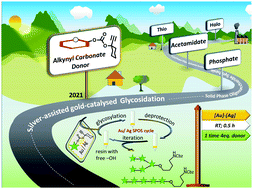
Chem. Commun., 2022,58, 641-644
https://doi.org/10.1039/D1CC06270K
Photo-modulated supramolecular self-assembly of ortho-nitrobenzyl ester-based alkynylplatinum(II) 2,6-bis(N-alkylbenzimidazol-2′-yl)pyridine complexes
The enhanced supramolecular self-assembly behaviors of photo-caged platinum(II) complexes have been triggered by applying light as the external stimulus.
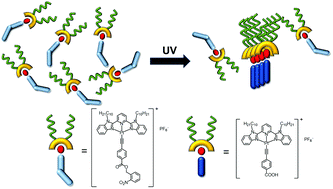
Chem. Commun., 2021,57, 13708-13711
https://doi.org/10.1039/D1CC05754E
Nickel-catalyzed synthesis of Zn(I)–Zn(I) bonded compounds
The first catalyzed synthesis of Zn(I)–Zn(I) bonded compounds was realized through nickel-catalyzed dehydrocoupling of zinc(II) hydrides.
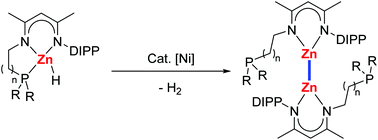
Chem. Commun., 2021,57, 13696-13699
https://doi.org/10.1039/D1CC05719G
A facile design of thio-perylenediimides with controllable fluorescent, photodynamic and photothermal effects towards cancer theranostics
A series of thionated perylenediimides with controllable fluorescent, photodynamic and photothermal effects have been synthesized by a one-pot method for multiple cancer phototheranostics.

Chem. Commun., 2021,57, 13126-13129
https://doi.org/10.1039/D1CC05483J
KB3H8: an environment-friendly reagent for the selective reduction of aldehydes and ketones to alcohols
Selective reduction of aldehydes and ketones to alcohols using KB3H8 was achieved in water and THF.
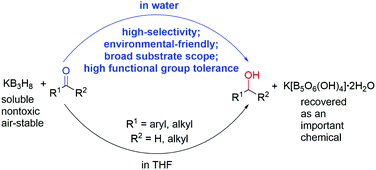
Chem. Commun., 2021,57, 12776-12779
https://doi.org/10.1039/D1CC05638G
Structurally screening calixarenes as peptide transport activators
We studied the influence of calixarene structure on transport efficiency of peptides, and provide meaningful information for transport systems.
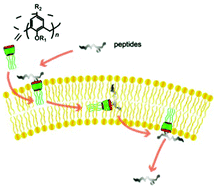
Chem. Commun., 2021,57, 12627-12630
https://doi.org/10.1039/D1CC05414G
Synthesis of β-cyanoalkylsulfonylated vinyl selenides through a four-component reaction
A copper-catalyzed multicomponent selenosulfonylation of alkynes with sulfur dioxide for the synthesis of β-cyanoalkylsulfonylated vinyl selenides is achieved.

Chem. Commun., 2021,57, 12603-12606
https://doi.org/10.1039/D1CC05690E
Steric control of sorting regimes in self-assembled cages
Self-sorting regimes are controlled by adjusting steric interactions in self-assembled coordination cages and equilibration followed by HPLC. Statistical or biased distributions can be obtained, including isolation of a single heteroleptic species.
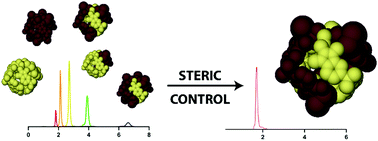
Chem. Commun., 2021,57, 12456-12459
https://doi.org/10.1039/D1CC05610G
Macrocyclic complexes based on [N⋯I⋯N]+ halogen bonds
Macrocyclic iodine(I) complexes with 5–10 Å cavity act as host molecules and encapsulate hexafluorophosphate anions in the gas phase confirmed by ion-mobility spectrometry and DFT calculations.
![Graphical abstract: Macrocyclic complexes based on [N⋯I⋯N]+ halogen bonds](/en/Image/Get?imageInfo.ImageType=GA&imageInfo.ImageIdentifier.ManuscriptID=D1CC05616F&imageInfo.ImageIdentifier.Year=2021)
Chem. Commun., 2021,57, 12464-12467
https://doi.org/10.1039/D1CC05616F
A photoelectrochemical biosensor based on methylene blue sensitized Bi5O7I for sensitive detection of PSA
Bismuth oxyiodide was used as a signal probe to construct a sensitization structure with methylene blue, combined with protein conversion strategy, and a photoelectrochemical biosensor was constructed for detection of prostate-specific antigen.

Chem. Commun., 2021,57, 12480-12483
https://doi.org/10.1039/D1CC05164D
One-pot gram-scale synthesis of virucidal heparin-mimicking polymers as HSV-1 inhibitors
A straightforward and gram-scale synthesis method was developed to engineer virucidal heparin-mimicking polymers as HSV-1 inhibitors.
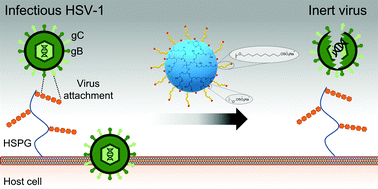
Chem. Commun., 2021,57, 11948-11951
https://doi.org/10.1039/D1CC04703E
Hypoiodite-catalysed oxidative homocoupling of arenols and tandem oxidation/cross-coupling of hydroquinones with arenes
A transition-metal-free method for the oxidative C–C homocoupling and tandem oxidation/cross-coupling is reported.

Chem. Commun., 2021,57, 11625-11628
https://doi.org/10.1039/D1CC05171G
Cobalt phosphide nanorings towards efficient electrocatalytic nitrate reduction to ammonia
High-quality CoP nanorings (CoP NRs) show high activity towards the nitrate electrocatalytic reduction reaction due to substantial coordinately unsaturated active sites, a high surface area, and available mass transfer pathways.
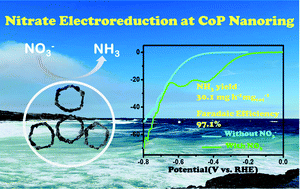
Chem. Commun., 2021,57, 11621-11624
https://doi.org/10.1039/D1CC04952F
A rearrangement of saccharin-derived cyclic ketimines with 3-chlorooxindoles leading to spiro-1,3-benzothiazine oxindoles
An unusual rearrangement of saccharin-derived cyclic ketimines (SDCIs) and 3-chlorooxindoles has been developed to provide a series of spiro-1,3-benzothiazine oxindoles.
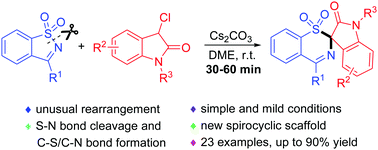
Chem. Commun., 2021,57, 11322-11325
https://doi.org/10.1039/D1CC04179G
Rim-differentiated Co-pillar[4+1]arenes
Rim-differentiated Co-pillar[4+1]arenes with clickable moieties and extra synthetic handles are versatile platforms for self-assembled molecular architectures and biological applications.
![Graphical abstract: Rim-differentiated Co-pillar[4+1]arenes](/en/Image/Get?imageInfo.ImageType=GA&imageInfo.ImageIdentifier.ManuscriptID=D1CC04840F&imageInfo.ImageIdentifier.Year=2021)
Chem. Commun., 2021,57, 11193-11196
https://doi.org/10.1039/D1CC04840F
Construction of an isoquinolinone framework from carboxylic-ester-directed umpolung ring opening of methylenecyclopropanes
A novel carboxylic ester directed umpolung ring opening of functionalized methylenecyclopropanes (MCPs) leading to the rapid construction of isoquinolinone framework.

Chem. Commun., 2021,57, 11201-11204
https://doi.org/10.1039/D1CC04826K
Selective synthesis of fluorinated biaryls by [MCl2(PhPEWO-F)] (M = Ni, Pd) catalysed Negishi cross-coupling
Selective Negishi cross-coupling of fluorinated aryls with Ni(II) or Pd(II) catalysts made easy using a coupling-promoter ligand.
![Graphical abstract: Selective synthesis of fluorinated biaryls by [MCl2(PhPEWO-F)] (M = Ni, Pd) catalysed Negishi cross-coupling](/en/Image/Get?imageInfo.ImageType=GA&imageInfo.ImageIdentifier.ManuscriptID=D1CC04915A&imageInfo.ImageIdentifier.Year=2021)
Chem. Commun., 2021,57, 10875-10878
https://doi.org/10.1039/D1CC04915A
Trapping an unusual pentacoordinate carbon atom in a neutral trialuminum complex
A pentacoordinate methylidene carbon atom was trapped in a neutral trimetallic aluminum core using a naphthalene bis amidinate ligand. The resulting complex exhibits the shortest equatorial Al–C bond distance reported for Al3-(μ3-CH2) moieties.
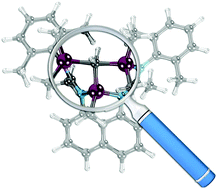
Chem. Commun., 2021,57, 10327-10330
https://doi.org/10.1039/D1CC04265C
A novel 18F-labeled clickable substrate for targeted imaging of SNAP-tag expressing cells by PET in vivo
In this work, high-contrast PET imaging of subcutaneous SNAP-tag expressing tumor xenografts is achieved by bioorthogonal covalent targeting with a novel 18F-based radioligand in vivo.
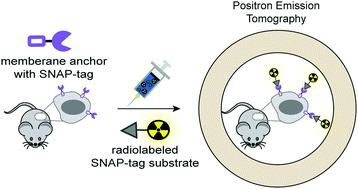
Chem. Commun., 2021,57, 9850-9853
https://doi.org/10.1039/D1CC03871K
Enantioselective synthesis of 1-aminoindene derivatives via asymmetric Brønsted acid catalysis
A catalytic asymmetric iminium ion cyclization reaction of simple 2-alkenylbenzaldimines using a BINOL-derived chiral N-triflyl phosphoramide was described. The corresponding 1-aminoindenes and tetracyclic 1-aminoindanes are formed in good yields and high enantioselectivities.
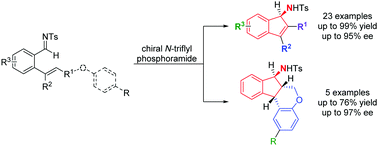
Chem. Commun., 2021,57, 9680-9683
https://doi.org/10.1039/D1CC03568A
A strongly Lewis-acidic and fluorescent borenium cation supported by a tridentate formazanate ligand
A fluorescent, strongly Lewis-acidic borenium cation (Gutmann–Beckett acceptor number >100) was created using a tridentate formazanate ligand. This cation shows a potential utility as a colourimetric reactivity probe.

Chem. Commun., 2021,57, 9530-9533
https://doi.org/10.1039/D1CC03873G
Key to C2 production: selective C–C coupling for electrochemical CO2 reduction on copper alloy surfaces
The OC–COH coupling is kinetically facilitated compared to OC–CHO coupling, which is induced by the optimized composition and electronic structures of copper alloys.
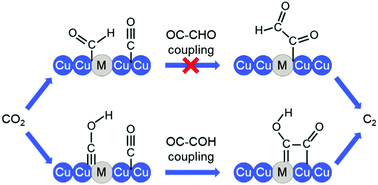
Chem. Commun., 2021,57, 9526-9529
https://doi.org/10.1039/D1CC03796J
Reactivity of an N-heterocyclic silylene with a 1,1′-ferrocenediyl backbone towards carbonyl compounds, including carbon suboxide
The reaction of a stable silylene with Ph2C![[double bond, length as m-dash]](https://www.rsc.org/images/entities/char_e001.gif) C
C![[double bond, length as m-dash]](https://www.rsc.org/images/entities/char_e001.gif) O and O
O and O![[double bond, length as m-dash]](https://www.rsc.org/images/entities/char_e001.gif) C
C![[double bond, length as m-dash]](https://www.rsc.org/images/entities/char_e001.gif) C
C![[double bond, length as m-dash]](https://www.rsc.org/images/entities/char_e001.gif) C
C![[double bond, length as m-dash]](https://www.rsc.org/images/entities/char_e001.gif) O respectively afforded the first silaallene oxide and a silylketene, whose hydrolysis furnished a stable methyleneketene.
O respectively afforded the first silaallene oxide and a silylketene, whose hydrolysis furnished a stable methyleneketene.
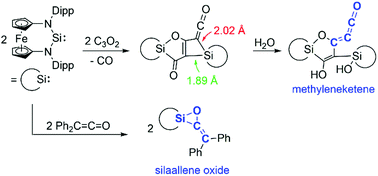
Chem. Commun., 2021,57, 9378-9381
https://doi.org/10.1039/D1CC03947D
Slow magnetic relaxation in distorted tetrahedral Dy(III) aryloxide complexes
Magnetostructural correlations: The magnetic relaxation dynamics of three distorted tetrahedral dysprosium aryloxide complexes are shown to vary according to their local coordination environments.
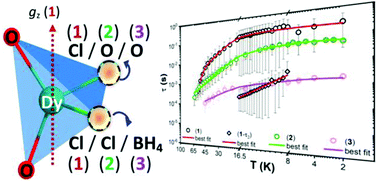
Chem. Commun., 2021,57, 9208-9211
https://doi.org/10.1039/D1CC02707G
Selective dimerization of a trinuclear mixed-metal sandwich complex: construction of an axially chiral metal skeleton
We report reductive dimerization of mixed metal Pd2Pt or PdPt2 sandwich complexes. The dimerization occurs through selective Pt–Pt bond formation, and the PdPt2 dimer has a unique axially chiral structure derived from the heterometal arrangement.
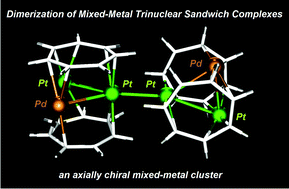
Chem. Commun., 2021,57, 9120-9123
https://doi.org/10.1039/D1CC03719F
Ligand switchable site selectivity in C–H alkenylation of thiophenes by turnover-limiting step control
Switchable site selectivity during Pd-catalysed C–H alkenylation of heteroarenes has been linked to a change from selectivity-determining C–H cleavage to C–C formation, respectively, upon substitution of ionic thioether for pyridine dative ligands.
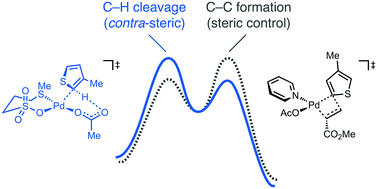
Chem. Commun., 2021,57, 9076-9079
https://doi.org/10.1039/D1CC03456A
Photo-irradiation tunes highly active sites over β-Ni(OH)2 nanosheets for the electrocatalytic oxygen evolution reaction
A facile photo-irradiation method is developed to tune active sites over β-Ni(OH)2 nanosheets for enhanced electrocatalytic oxygen evolution reaction.
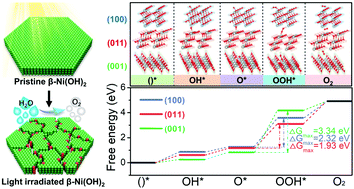
Chem. Commun., 2021,57, 9060-9063
https://doi.org/10.1039/D1CC03410C
Photoinduced transition-metal and external photosensitizer free cross-coupling of aryl triflates with trialkyl phosphites
Photoinduced phosphonation of aryl triflates with trialkyl phosphites via a tandem single-electron-transfer, C–O bond cleavage and Arbuzov rearrangement process in the absence of transition-metal and external photosensitizer is reported.

Chem. Commun., 2021,57, 8429-8432
https://doi.org/10.1039/D1CC03496K
Bioinspired in situ repeatable self-recovery of superhydrophobicity by self-reconstructing the hierarchical surface structure
A new strategy for fabricating a plant leaf cuticle-like material has been reported, which repeatedly secretes wax and assembles into crystal platelets upon physical damage, and brings superhydrophobicity back.

Chem. Commun., 2021,57, 8425-8428
https://doi.org/10.1039/D1CC02974F
Rhodium(III)-catalyzed asymmetric [4+1] spiroannulations of O-pivaloyl oximes with α-diazo compounds
Catalytic asymmetric [4+1] spiroannulation of O-pivaloyl oximes with α-diazo homophthalimides has been realized for enantioselective synthesis of spirocyclic imines.
![Graphical abstract: Rhodium(iii)-catalyzed asymmetric [4+1] spiroannulations of O-pivaloyl oximes with α-diazo compounds](/en/Image/Get?imageInfo.ImageType=GA&imageInfo.ImageIdentifier.ManuscriptID=D1CC02888J&imageInfo.ImageIdentifier.Year=2021)
Chem. Commun., 2021,57, 8268-8271
https://doi.org/10.1039/D1CC02888J
Tertiary cyclopropyl carbagermatranes: synthesis and cross-coupling
Tertiary cyclopropyl carbagermatranes acting as robust nucleophiles for the synthesis of cyclopropane with quaternary centers.
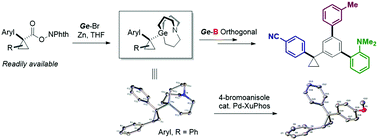
Chem. Commun., 2021,57, 8143-8146
https://doi.org/10.1039/D1CC02930D
Selective, radical-free activation of benzylic C–H bonds in methylarenes
We report the selective oxidative addition of benzylic C–H bonds in industrially important methylarenes using rare η4-arene iridium complexes.

Chem. Commun., 2021,57, 7894-7897
https://doi.org/10.1039/D1CC03445F
Metabolic iron detection through divalent metal transporter 1 and ferroportin mediated cocktail fluorogenic probes
A cocktail [1 + 2] dual-fluorescent probe system could realize the real-time visualization of dynamic iron state changes between Fe2+ and Fe3+.
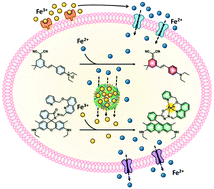
Chem. Commun., 2021,57, 7902-7905
https://doi.org/10.1039/D1CC03150C
Varying the hydrophobic spacer to influence multicomponent gelation
We investigate the effect of hydrophobic spacer on gel properties in a multicomponent system.

Chem. Commun., 2021,57, 7898-7901
https://doi.org/10.1039/D1CC02786G
B(C6F5)3-Catalyzed site-selective N1-alkylation of benzotriazoles with diazoalkanes
The site-selective N1-alkylation of benzotriazoles with diazoalkanes is achieved using 10 mol% of B(C6F5)3 as a catalyst.
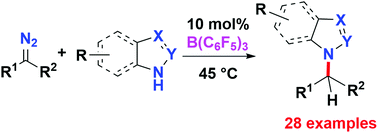
Chem. Commun., 2021,57, 7758-7761
https://doi.org/10.1039/D1CC03048E
Pillar[5]arene-based supramolecular photosensitizer for enhanced hypoxic-tumor therapeutic effectiveness
A galactose-targeting supramolecular photosensitizer system DOX@GP5⊃NBSPD was constructed based on a host–guest inclusion complex, which could achieve the enhanced hypoxic-tumor therapeutic effectiveness by chemo-photodynamic combination.
![Graphical abstract: Pillar[5]arene-based supramolecular photosensitizer for enhanced hypoxic-tumor therapeutic effectiveness](/en/Image/Get?imageInfo.ImageType=GA&imageInfo.ImageIdentifier.ManuscriptID=D1CC02959B&imageInfo.ImageIdentifier.Year=2021)
Chem. Commun., 2021,57, 7625-7628
https://doi.org/10.1039/D1CC02959B
Distinct impact of glycation towards the aggregation and toxicity of murine and human amyloid-β
Modifications of mAβ and hAβ by glycation can differentiate their aggregation and cytotoxicity profiles.
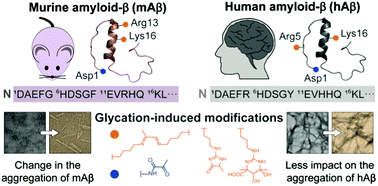
Chem. Commun., 2021,57, 7637-7640
https://doi.org/10.1039/D1CC02695J
Synthesis of novel six-, seven- and eight-membered aluminum-containing rings by alumole ring expansion
Herein we present a range of new ring expansion reactions of an alumole with heteroatom-containing unsaturated species, providing a range of novel six-, seven- and eight-membered cyclic products with high heteroatom content.
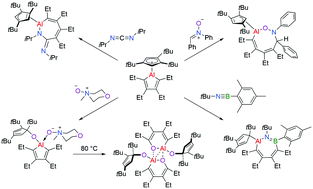
Chem. Commun., 2021,57, 7505-7508
https://doi.org/10.1039/D1CC02993B
Synergistic covalent-and-supramolecular polymers connected by [2]pseudorotaxane moieties
Synergistic covalent-and-supramolecular polymers connected by [2]pseudorotaxane moieties are designed and synthesized, whose unique topological structures lead to materials with mechanically adaptive properties.
![Graphical abstract: Synergistic covalent-and-supramolecular polymers connected by [2]pseudorotaxane moieties](/en/Image/Get?imageInfo.ImageType=GA&imageInfo.ImageIdentifier.ManuscriptID=D1CC02873A&imageInfo.ImageIdentifier.Year=2021)
Chem. Commun., 2021,57, 7374-7377
https://doi.org/10.1039/D1CC02873A
Unprecedented [d9]Cu⋯[d10]Au coinage bonding interactions in {Cu(NH3)4[Au(CN)2]}+[Au(CN)2]− salt
The X-ray structure of the {Cu(NH3)4[Au(CN)2]}+[Au(CN)2]− salt is reported showing an unprecedented [d9]Cu⋯[d10]Au coinage bond.
![Graphical abstract: Unprecedented [d9]Cu⋯[d10]Au coinage bonding interactions in {Cu(NH3)4[Au(CN)2]}+[Au(CN)2]− salt](/en/Image/Get?imageInfo.ImageType=GA&imageInfo.ImageIdentifier.ManuscriptID=D1CC02709C&imageInfo.ImageIdentifier.Year=2021)
Chem. Commun., 2021,57, 7268-7271
https://doi.org/10.1039/D1CC02709C
Complete deconstruction of SF6 by an aluminium(I) compound
The room-temperature activation of SF6, a potent greenhouse gas, is reported using a monovalent aluminium(I) reagent to form well-defined aluminium(III) fluoride and aluminium(III) sulfide products.
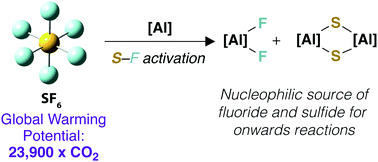
Chem. Commun., 2021,57, 7096-7099
https://doi.org/10.1039/D1CC02838C
Borane catalysed cyclopropenation of arylacetylenes
Triarylborane catalysed cyclopropenation of a arylacetylenes using donor–acceptor diazoesters.
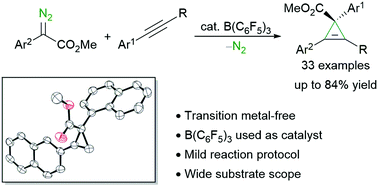
Chem. Commun., 2021,57, 6736-6739
https://doi.org/10.1039/D1CC01856F
Fusing pyrene and ferrocene into a chiral, redox-active triangle
A trimeric ferrocene–pyrene cyclophane interconverts between enantiomeric conformers, a consequence of both ferrocene rotation and the frontier orbitals of pyrene.
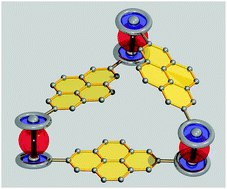
Chem. Commun., 2021,57, 6660-6663
https://doi.org/10.1039/D1CC02191E
About this collection
This ongoing web-collection features the latest articles published in ChemComm that have been marked as HOT by our Editors and trusted Reviewers. Congratulations to all those featured.